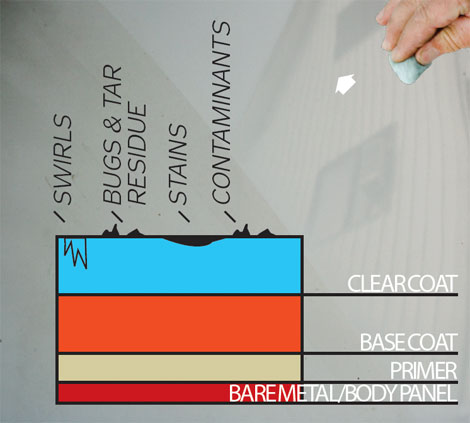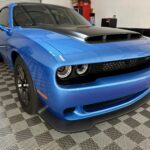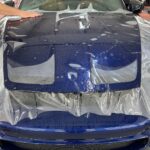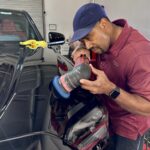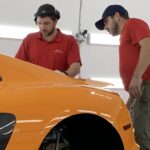Cleaning and waxing are the most basic maintenance tasks for a car owner. But doing it right—without hazy paint, dull headlights and crud in the cracks—takes expertise. Make the finish on the exterior and interior last as long as the mechanicals with these pro cleaning tips.
Guess what? The median age of cars on the road is creeping up. But thanks to industry-wide improvements in quality, cars are more reliable than they were only a decade ago. One hundred thousand miles was the watershed number that labeled a car as “old” back in the day. Now, it’s not uncommon for a vehicle to last twice that many miles before something too expensive to fix forces it into the scrap yard. That’s the good news. Here’s the bad news: The paint, body and interior have twice as much time marinating in the elements to lose that factory-fresh patina and start looking like Jed Clampett’s pickup. So how does a vehicle’s condition affect its market price? We looked up the trade-in value of a 2000 Honda Accord with 100,000 miles at edmunds.com. The site says that in excellent condition, it’s worth just about five grand in trade. Downgrade that rating to average and you’ll lose over $2000. Here’s how to protect your investment–and maximize its value down the road.
SCRUB DOWN
Cars get dirty. But there’s more than just dirt and rain spots clinging to your car’s exterior. Airborne industrial pollutants, acid rain, dead bugs, tree sap and bird droppings can all degrade the paint. Modern car finishes are all covered with a clear coat to protect the pigmented main layer, but even this UV-resistant outer layer will last longer if you maintain it. Keep things clean and waxed to repel water and pollutants.
The same goes for your car’s interior. That slimy patina of French fries, Big Gulp, sweat and dirt will eventually turn your interior into a primordial swamp. Shampoo the cloth seats to remove all that gunk. Now, forget what you think you know. There’s nothing under your kitchen sink that’s appropriate for washing or cleaning your car, except maybe the glass cleaner. Leave the dish detergent for the dishes, and use a proper car-washing solution. Clean the window glass last to catch all the oversprayed cleaning products.
Leather seats deserve a proper leather cleaner, followed by leather conditioner to replenish the skin’s natural oils. Save the protectant for the dashboard. I strongly recommend against using protectant on the steering wheel and rubber pedals, because it can reduce your grip to dangerous levels.
Park in the shade while washing and waxing to prevent the heat of the sun from drying off the car and making water spots before you can dry them. Wet the surface beforehand to help dissolve the bug stains and loosen the dirt. Hose the salt and mud off the wheel wells and undercarriage.
Clean the wheels first to keep all the slop from getting on the bodywork. Rinse the wheels down, but wax them with the rest of the paint. Now you can wash the car all over with a lambswool wash mitt, drying it with chamois, terrycloth or microfiber towels. Save the diapers–they’re too abrasive.
The gold standard in wax used to be hard-to-apply paste carnauba wax. You know: Wax on, wax off. Modern chemistry has reduced wax to nano-size particles, added synthetics and generally made wax easy to apply and remove. We also like quick detailers for everyday use. Follow up a quick wash and dry with a light spray of detailer and wipe down with a microfiber towel for months of protection from the environment. Final step: Clean up any water spots on the windows inside and out.
MARSHALL’S EXPERT TIP: TAKE OUT THE HAZE WITH CLAY
Neglected paint can haze out and collect surface contaminants that chemical-cleaner waxes can’t improve. Try a clay bar, an old detailer’s trick. Start with a thorough wash to remove abrasive dirt. Then spray the clay kit’s lubricant over a few square feet of panel. Knead the clay bar to soften it, and run it over the surface in straight lines. Flip the bar over and rub at right angles. Keep the surface wet. It should take a good hour to clay a typical car. Follow up with a wash and wax.
Hazed-out plastic headlights are not only ugly, they’re dangerous. We’re using a Mothers PowerBall and plastic polish to make our old lights look new. Mask the area to keep from polishing off the surrounding paint.
Wet down the wheel and tire, then spray or brush on the wheel cleaner. Use a soft brush to get in where the brake dust hides, then hose down. Lather, rinse, repeat–then dry the water spots off with a clean towel. Follow up with car wax.
Much of what you think is polished metal on today’s cars is actually either chromed plastic or painted and clear-coated metal. Lightly polish an inconspicuous area for a few seconds. Bare metal will leave dark gray residue in the polishing cloth–no gray means you’re polishing clear coat. That’s bad. Hand-polishing works fine, but we saved a lot of time on some aluminum wheels using a PowerCone on a cordless drill. Follow up with, you guessed it, wax.
An old toothbrush or a specialized detailing brush will get crud out of cracks. Be sure the vehicle is dry before waxing.
Hazed-out paint will usually recover if you use a good chemical-cleaner wax. If your car has clear-coat paint–most cars made since the ’90s do–look for a product labeled “clear-coat safe.” Abrasive compounds are great for non-clear-coat paints on older cars.
Use the same trick I described for metal polish to check if your paint is clear-coated. Rub a hidden area of the paint surface with compound. If the rag picks up any body color, there’s no clear coat.
And, as always if all this seems to much, just call the Automotive Appearance Specialists™ at August Precision. We are always standing by ready to help in the restoration and maintenance of your automobiles appearance.

